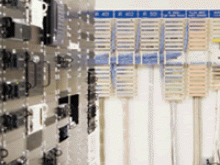What Are Industry Characteristics Of Information Technology Services
 The Information Technology Sector is central to the nation'southward security, economy, and public wellness and rubber as businesses, governments, academia, and private citizens are increasingly dependent upon Information technology Sector functions. These virtual and distributed functions produce and provide hardware, software, and information technology systems and services, and—in collaboration with the Communications Sector—the Net. The sector'due south complex and dynamic environment makes identifying threats and assessing vulnerabilities difficult and requires that these tasks be addressed in a collaborative and creative fashion.
The Information Technology Sector is central to the nation'southward security, economy, and public wellness and rubber as businesses, governments, academia, and private citizens are increasingly dependent upon Information technology Sector functions. These virtual and distributed functions produce and provide hardware, software, and information technology systems and services, and—in collaboration with the Communications Sector—the Net. The sector'due south complex and dynamic environment makes identifying threats and assessing vulnerabilities difficult and requires that these tasks be addressed in a collaborative and creative fashion.
Information technology Sector functions are operated by a combination of entities—often owners and operators and their respective associations—that maintain and reconstitute the network, including the Internet. Although it infrastructure has a certain level of inherent resilience, its interdependent and interconnected construction presents challenges as well as opportunities for coordinating public and private sector preparedness and protection activities.
Sector-Specific Programme
The Information Technology Sector-Specific Plan details how the National Infrastructure Protection Programme chance management framework is implemented within the context of the unique characteristics and hazard landscape of the sector. Each Sector Risk Management Agency develops a sector-specific programme through a coordinated effort involving its public and private sector partners. The Department of Homeland Security is designated as the Sector Risk Management Agency for the Information technology Sector.
Sector Resources
For additional resource available to Data Technology Sector partners, visit the Cybersecurity and Infrastructure Security Agency's (CISA) Cybersecurity Sectionalization.
Introduction to the Information Technology Sector Take chances Management Agency Fact Sheet
CISA offers many resources to assist owners and operators manage risks, improve security, and aid the implementation and execution of protective and response measures beyond the Information technology Sector. This printer-friendly fact sheet lists a sampling of sector collaboration mechanisms, resources, and training materials.
Security Tenets for Life Critical Embedded Systems
Life critical embedded systems—whether medical devices, cars that connect to the Internet, Supervisory Control and Data Acquisition (SCADA), industrial control systems (ICS), or other systems—play a crucial office in today's earth. Equally more and more than of these systems become interconnected to the Cyberspace of Things, the need to properly secure these systems from hackers and cyberattacks is becoming increasingly axiomatic.
The Security Tenets for Life Critical Embedded Systems meets this demand by providing basic security guidelines meant to ensure that life critical embedded systems beyond all industries accept a common agreement of what is needed to protect human life, forbid loss or severe damage to equipment, and forestall environmental damage. The intent of this certificate is not to create a mandate or regulation; rather, information technology seeks to specify a prepare of prioritized, core technical principles applicative across any industry or organization with life critical embedded systems, which, if implemented, would result in a significantly more secure environment than is currently the norm for life critical embedded systems. These core technical principles offer a starting bespeak for industry-specific consortia and government groups to consider in developing standards and norms and for organisation developers to use in edifice or updating life critical embedded systems.
What Are Industry Characteristics Of Information Technology Services,
Source: https://www.cisa.gov/information-technology-sector
Posted by: changthatera1965.blogspot.com


0 Response to "What Are Industry Characteristics Of Information Technology Services"
Post a Comment